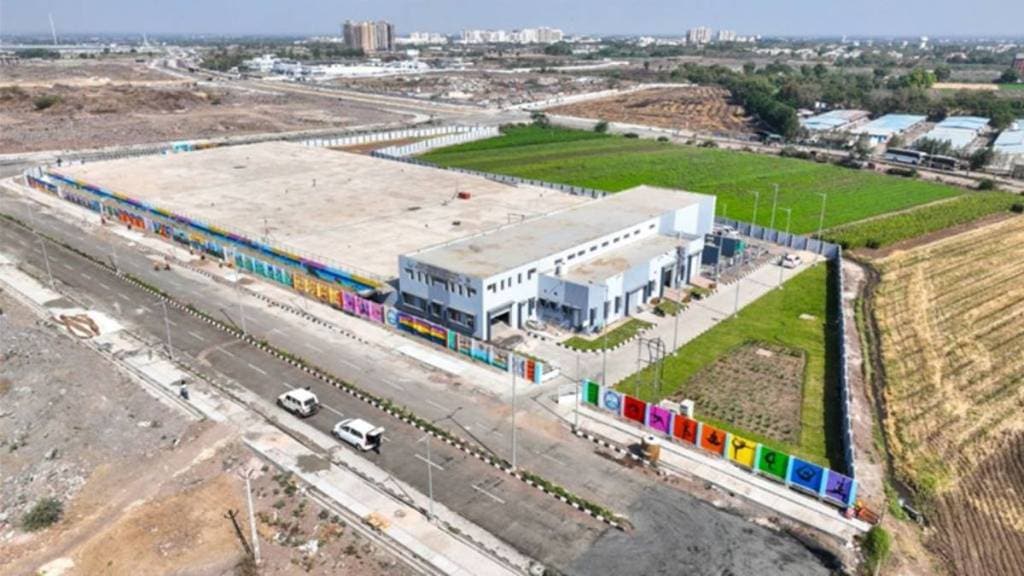Rajkot, Gujarat’s fourth-largest city, is a vibrant blend of tradition and innovation that embodies the spirit of Saurashtra in western Gujarat. Known for its rich culture and history, Rajkot has become a hub for migration in the region, drawing people from across Gujarat and beyond. This migration is not just a testament to Rajkot’s economic dynamism but also reflects the city’s unique lifestyle, rooted in its thriving MSME and light automobile ancillary sectors. At the heart of Rajkot’s growth is a culture of entrepreneurship and cost-effective innovation that distinguishes the city within Gujarat’s industrial landscape.
Historically, Rajkot was the capital of the princely state of Saurashtra, and its heritage shines through in its palaces, forts, and temples. Sites like the Watson Museum, which celebrates the city’s history, and Mahatma Gandhi’s childhood residence, the Kaba Gandhi No Delo, highlight Rajkot’s contributions to India’s freedom struggle and its longstanding legacy. The city’s streets are lined with traditional Havelis and vibrant markets that reflect its past, while new developments in infrastructure, education, and public services reveal its forward-looking nature. Rajkot’s cultural tapestry is woven with the aesthetics of Gujarati traditions, intricate art, colorful festivals, and a strong sense of community that values innovation as much as it does heritage.
This cultural ethos is mirrored in the vision of the Rajkot Municipal Corporation (RMC), which has undertaken ambitious plans to drive sustainable urban growth. RMC is one of the few municipal corporations in India that provides a wide range of civic services under a single governing body, setting it apart in terms of operational efficiency. The organization is responsible for everything from basic city services like water and sewerage to managing zoos, planetariums, libraries, sports facilities, and auditoriums. With a service area of 164 square kilometers, RMC’s approach to urban management has set benchmarks for other cities to follow.
RMC’s latest endeavor, a Rs 100 crore municipal bond, is a bold step aimed at addressing the city’s expanding needs, especially as Rajkot’s boundaries are set to extend to nearby areas. This bond issue, oversubscribed nearly five times with an interest rate of 7.90%, underscores the confidence investors have in Rajkot’s financial health and growth prospects. This move also aligns with the city’s goal to improve transparency and fiscal accountability. To prepare for this initiative, RMC implemented reforms such as transitioning to double-entry accounting and digitalizing all financial transactions, which in turn improved its credit rating from an A- to a strong AA by CRISIL.
The funds raised through the bond will be directed toward critical infrastructure improvements, particularly in newly merged city areas. Projects such as a 23 MLD Sewage Treatment Plant (STP), a 14 MLD Elevated Service Reservoir (ESR), and a comprehensive 500-kilometer water and sewerage network are set to be partly financed through this bond issue. This will not only enhance the quality of life for Rajkot’s residents but will also help lay the foundation for long-term urban sustainability. The Government of India’s Rs 13 crore interest subsidy for cities issuing municipal bonds will further reduce borrowing costs, making this a financially prudent move.
Rajkot is also a pioneer in climate action, consistently winning the One Planet One City award, and has recently announced a Net Zero Action Plan with a target for 2070. In addition, the city’s greenfield smart city project, spread over 730 acres, reflects its commitment to modern urban design and sustainability, setting it apart from other cities under the Smart City Mission. These projects not only enhance Rajkot’s infrastructure but also amplify its reputation as a city at the forefront of innovative and responsible urban planning.
As Rajkot looks to the future, it continues to balance its rich heritage with a drive for modernity. The city’s commitment to transparency, responsible fiscal management, and community-focused development ensures it remains a beacon of progress in Gujarat. With projects underway that could serve as models for other cities in India, Rajkot’s growth story is just beginning, promising a brighter, sustainable future for its residents and for generations to come.

